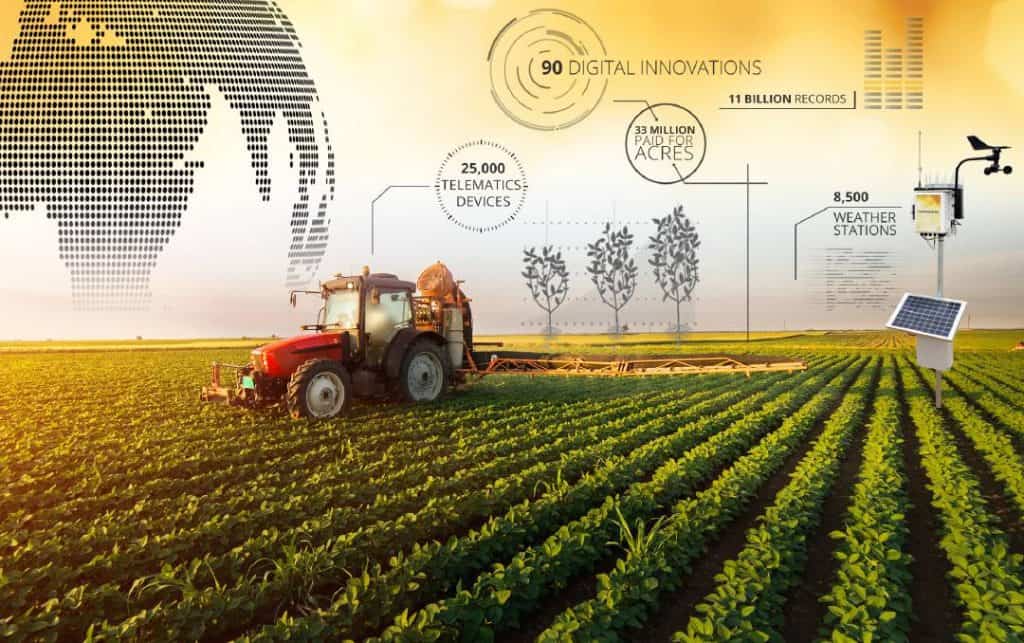Introduction
Agriculture has come a long way from traditional farming methods. Today, technological advancements have ushered in an era of automation and data-driven decision-making, revolutionizing the agricultural landscape. One of the key drivers of this transformation is the integration of big data in farming. In this blog post, we will delve into the integration of big data in automated farming, understanding how it’s changing the game and what lies ahead for the industry.
The Evolution of Agriculture: From Manual to Automated Farming
Agriculture has always been at the forefront of innovation. From the invention of the plow to the development of hybrid seeds, farmers have embraced technology to increase efficiency and productivity. The latest frontier in this journey is automation, and at its heart lies big data.
Understanding Big Data in Agriculture
Big data in agriculture refers to the collection, analysis, and utilization of vast amounts of data generated throughout the farming process. This data encompasses various aspects, including weather patterns, soil conditions, crop growth, and equipment performance. Through sensors, satellite imagery, and other data sources, farmers can now gather an unprecedented amount of information about their farms.
The Role of Big Data in Automated Farming
Precision Agriculture: One of the primary applications of big data in farming is precision agriculture. With the help of sensors and GPS technology, farmers can create detailed maps of their fields, analyzing soil moisture levels, nutrient content, and more. This information enables precise planting, irrigation, and fertilization, minimizing waste and maximizing yields.
Predictive Analytics: Big data allows farmers to harness the power of predictive analytics. By analyzing historical data, weather patterns, and crop conditions, predictive models can provide insights into potential crop diseases or pests. Farmers can then take proactive measures to protect their crops, reducing the need for chemical interventions.
Smart Farm Equipment: Automated farming equipment, equipped with sensors and data connectivity, can make real-time decisions based on data inputs. For example, self-driving tractors can adjust their speed and direction to optimize fuel usage and reduce soil compaction. Such innovations improve efficiency and reduce labor requirements.
Supply Chain Optimization: Big data is not limited to the farm itself; it extends to the entire agricultural supply chain. Data analytics can help streamline logistics, ensuring that crops are harvested, transported, and stored efficiently. This reduces food waste and ensures fresher produce reaches consumers.
Benefits of Big Data Integration in Agriculture
The integration of big data in farming brings a plethora of benefits:
Increased Yields: Precision agriculture, enabled by big data, helps optimize resource usage, leading to higher crop yields.
Cost Reduction: By reducing the need for excessive fertilizers, pesticides, and water, big data can lower production costs.
Environmental Sustainability: Sustainable farming practices are becoming increasingly important. Big data can help farmers minimize their environmental footprint by using resources more efficiently.
Data-Driven Decision-Making: Farmers can make informed decisions based on real-time data, reducing guesswork and risk.
Improved Quality: By monitoring and adjusting conditions in real-time, farmers can produce higher-quality crops.
Challenges and Concerns
While big data holds immense potential in agriculture, it is not without challenges:
Data Security: Protecting sensitive farm data from cyber threats is a significant concern. Farmers need robust cybersecurity measures to safeguard their information.
Data Access and Ownership: Determining who owns and controls the data generated on farms can be a complex issue, leading to disputes.
Data Integration: Integrating data from various sources and ensuring compatibility can be a technical challenge.
Cost of Technology: Implementing big data solutions can be expensive, especially for smaller farmers with limited resources.
The Future of Automated Farming with Big Data
The integration of big data in agriculture is an ongoing journey, and the future holds even more exciting possibilities:
Artificial Intelligence: AI-powered systems will become more prevalent in farming, making autonomous decisions based on big data inputs.
Blockchain for Transparency: Blockchain technology can enhance transparency and traceability in the supply chain, assuring consumers of the origin and quality of their food.
Climate Adaptation: Big data can help farmers adapt to changing climate conditions by providing real-time information for better decision-making.
Global Food Security: The adoption of big data in agriculture can contribute to global food security by optimizing production and reducing waste.
Conclusion
The integration of big data in automated farming is transforming agriculture as we know it. It empowers farmers with data-driven insights, improves efficiency, and contributes to sustainable practices. While challenges exist, the future of agriculture is undeniably digital and data-centric. With continued innovation and investment, we can expect a greener, more productive, and more sustainable future for farming.




